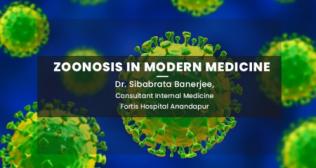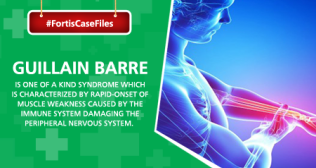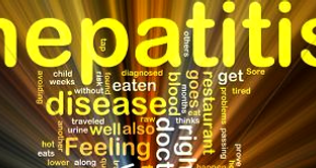
Amyloidosis: When Abnormal Proteins Build Up in Your Organs
Amyloidosis is a rare but serious condition in which misfolded proteins, called amyloid, accumulate in organs and tissues. Over time, these deposits interfere with normal function, leading to organ damage. Early recognition of what is amyloidosis, understanding its underlying amyloidosis causes, and seeking prompt amyloidosis treatment can slow progression and improve quality of life.
This guide benefits anyone newly diagnosed with amyloidosis disease, family members supporting a loved one, and healthcare providers seeking a clear overview. We’ll explain what happens in amyloidosis, explore risk factors, review amyloidosis disease symptoms, discuss types of amyloidosis, outline treatment strategies, and cover long‑term outlook.
What Is Amyloidosis?
Amyloidosis refers to a group of disorders characterized by abnormal protein folding. Normally, proteins fold into specific shapes to perform functions. In amyloidosis, protein fragments misfold into rigid, insoluble fibrils. These fibrils clump together and deposit in organs such as the heart, kidneys, liver, nerves, and gastrointestinal tract.
There are over 30 proteins known to form amyloid fibrils in humans. The most common form, light‑chain (AL) amyloidosis, involves fragments of antibodies produced by plasma cells in the bone marrow. Another major type, transthyretin (ATTR) amyloidosis, results from a liver‑produced protein that misfolds, either due to genetic mutation (hereditary ATTR) or age‑related changes (wild‑type ATTR).
As deposits grow, they stiffen organs and impair function. For instance, amyloid in the heart wall reduces its ability to pump, leading to heart failure. In kidneys, deposits block filtering, causing proteinuria and eventual kidney failure. Recognizing what is amyloidosis helps patients and clinicians identify signs early and begin appropriate management.
Amyloidosis Causes and Risk Factors
The exact amyloidosis causes depend on the type:
AL (Light‑Chain) Amyloidosis: Caused by a plasma cell disorder similar to multiple myeloma. Excess light chains misfold and deposit. Risk increases with age, typically affecting people over 60.
ATTR (Transthyretin) Amyloidosis
- Hereditary ATTR arises from inherited TTR gene mutations. Family history of neuropathy or heart disease may signal risk.
- Wild‑type ATTR occurs without mutation, often in men over 70. Age‑related changes in protein stability lead to deposition.
AA (Reactive) Amyloidosis: Occurs in chronic inflammatory conditions like rheumatoid arthritis, tuberculosis, or inflammatory bowel disease. High levels of the acute‑phase protein serum amyloid A promote fibril formation.
Other Rare Types: Includes beta-2 microglobulin amyloidosis in patients on long‑term dialysis, and localized forms in individual organs (e.g., cerebral amyloid angiopathy in Alzheimer’s).
Common risk factors across types include older age, chronic inflammatory disease, certain genetic mutations, and prolonged dialysis. Family history of amyloidosis disease especially in hereditary ATTR warrants genetic counseling and regular monitoring.
Amyloidosis Disease Symptoms and Diagnosis
Symptoms vary widely based on organ involvement and amyloid burden. Common amyloidosis disease symptoms include:
- Heart: Shortness of breath on exertion, swelling in legs, low blood pressure, and arrhythmias.
- Kidneys: Swelling around eyes and ankles, foamy urine from protein loss, fatigue.
- Nervous System: Numbness or tingling in hands and feet (peripheral neuropathy), dizziness upon standing (autonomic neuropathy).
- Gastrointestinal Tract: Weight loss, diarrhea, constipation, difficulty swallowing.
- Liver and Spleen: Enlarged liver or spleen, leading to abdominal discomfort.
- Skin and Soft Tissue: Easy bruising, waxy papules around the eyes, or protein deposits in joints.
Because symptoms are nonspecific, diagnosis requires a high index of suspicion. Evaluation steps include:
Blood and Urine Tests:
- Serum free light chain assay and immunofixation to detect monoclonal proteins in AL amyloidosis.
- Genetic testing for TTR mutations in suspected ATTR cases.
Biopsy:
- Fat pad aspirate, bone marrow, or affected organ biopsy stained with Congo red under polarized light reveals apple‑green birefringence, confirming amyloid.
Imaging:
- Echocardiogram and cardiac MRI assess amyloid infiltration of the heart.
- Nuclear scintigraphy with technetium‑labeled tracers distinguishes ATTR from AL by detecting TTR deposits.
Additional Studies:
- Nerve conduction tests for neuropathy.
- Kidney biopsy if proteinuria is significant and etiology unclear.
Early diagnosis allows faster initiation of amyloidosis treatment before irreversible organ damage occurs.
Types of Amyloidosis
Understanding types of amyloidosis guides treatment approaches and prognosis:
- AL Amyloidosis: The most common systemic form. Treatment targets the abnormal plasma cells that produce light chains. Prognosis depends on cardiac involvement and response to therapy.
ATTR Amyloidosis
- Hereditary: Presents with neuropathy or cardiomyopathy in mid‑life. Genetic therapies and gene silencers are emerging treatments.
- Wild‑Type: Often presents later with predominantly cardiac symptoms. Treatment focuses on stabilizing the TTR protein and managing heart failure.
AA Amyloidosis: Arises in the setting of chronic inflammation. Controlling the underlying inflammatory disease with biologics or disease‑modifying agents reduces serum amyloid A levels and slows deposition.
Beta‑2 Microglobulin Amyloidosis: Affects long‑term dialysis patients. Adequate dialysis and newer filters can reduce amyloid buildup in bones and joints.
Localized forms, such as cutaneous or laryngeal amyloidosis, typically require local excision or radiotherapy and have a better prognosis.
Treatment and Amyloidosis Treatment Strategies
Management of amyloidosis depends on type and organ involvement. Goals include reducing amyloid production, removing existing deposits when possible, and preserving organ function.
AL Amyloidosis Treatment
- Chemotherapy: Regimens similar to multiple myeloma (e.g., bortezomib, cyclophosphamide, dexamethasone) target abnormal plasma cells.
- Autologous Stem Cell Transplant: In eligible patients, high‑dose chemotherapy followed by stem cell rescue can achieve deep hematologic responses.
ATTR Amyloidosis Treatment
- TTR Stabilizers: Tafamidis binds to TTR tetramers, preventing misfolding and fibril formation.
- Gene Silencers: Patisiran and inotersen reduce TTR production in the liver through RNA interference or antisense mechanisms.
- Liver Transplant: Reserved for hereditary ATTR in younger patients with severe disease to replace the source of mutant TTR.
AA Amyloidosis Treatment
- Anti‑Inflammatory Therapy: Biologic agents such as TNF inhibitors or IL‑6 receptor blockers control underlying inflammatory disorders and lower serum amyloid A.
Supportive Care
- Cardiac Management: Diuretics for fluid overload, rate control for arrhythmias, and careful blood pressure monitoring.
- Renal Support: Management of proteinuria, blood pressure control, and renal replacement therapy when needed.
- Neuropathy Treatment: Pain control with medications like duloxetine or gabapentin, and physical therapy.
Regular follow‑up with echocardiograms, biomarkers (NT‑proBNP, troponin), and free light chain assays monitor response to amyloidosis treatment.
Prevention & Prognosis
There is no universal prevention for systemic amyloidosis. However, risk can be reduced by:
- Early Control of Inflammation: In chronic inflammatory conditions, timely treatment lowers serum amyloid A production.
- Genetic Counseling: For families with hereditary ATTR mutations, testing and early monitoring can guide preemptive therapy.
- Regular Screening: Patients with monoclonal gammopathy of undetermined significance (MGUS) or smoldering myeloma should have periodic evaluation for early signs of AL amyloidosis.
Prognosis varies: untreated AL amyloidosis with cardiac involvement has a median survival under one year. With modern therapies, two‑year survival rates exceed 80 percent. ATTR outcomes depend on the form: wild‑type ATTR typically progresses slowly, while hereditary cases can be more aggressive without early intervention.
Frequently Asked Questions
Q1: What distinguishes amyloidosis disease from other protein disorders?
Ans. Amyloidosis involves misfolded proteins that form insoluble fibrils and deposit in tissues. Other protein disorders do not create these rigid fibrils.
Q2: Can early treatment reverse organ damage?
Ans. Early treatment can halt further amyloid deposition and sometimes improve organ function, but existing damage may not fully reverse.
Q3: How is hereditary ATTR diagnosed?
Ans. Genetic testing identifies TTR gene mutations. Family members of confirmed cases should consider screening.
Q4: Are there any lifestyle changes to help?
Ans. Maintaining healthy blood pressure, avoiding alcohol excess, and following treatment for underlying diseases support organ health.
Q5: Is amyloidosis contagious?
Ans. No. Amyloidosis is not an infectious disease and cannot spread from person to person.
Key Takeaways
Amyloidosis requires a multidisciplinary approach involving hematology, cardiology, nephrology, and neurology specialists. If you notice unexplained fatigue, shortness of breath, swelling, or numbness, discuss amyloidosis disease symptoms with your healthcare provider. Early recognition of what is amyloidosis and prompt amyloidosis treatment can preserve organ function and improve outcomes.


















